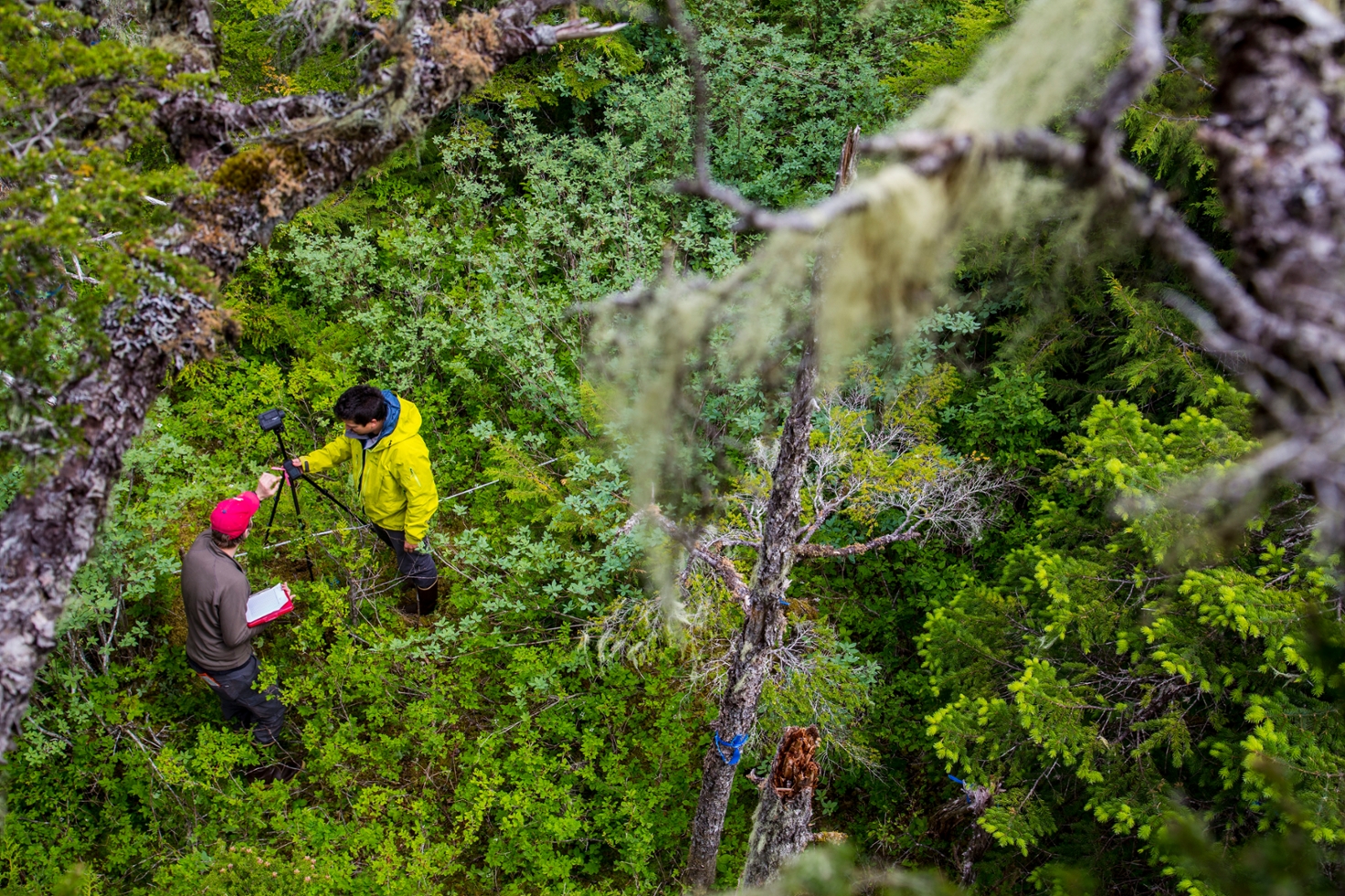Publications

Limited stand expansion by a long-lived conifer at a leading northern range edge, despite available habitat
Read more…
ACRC is investigating the ecological effects of yellow-cedar decline, and the market potential of dead tree stands to provide needed economic opportunities to local timber mills.
Yellow-cedar, one of the most culturally and economically important tree species of the northern PCTR, is in rapid decline across southeast Alaska due to climate change. As temperatures rise, the region is seeing decreases in the winter snowpack that insulates the shallow root system of these trees during late season freeze events.
The decline is impacting hundreds of thousands of hectares of forest and jeopardizing regional logging businesses as well as traditional Alaska native practices that have relied on the this strong, long-lasting wood and bark source for thousands of years.
Yellow-cedar is a highly valued wood. Yellow-cedar trees have renowned decay-resistant properties, which is why they are widely used for carving and building. They can remain standing and retain their strength and integrity even decades after death. Salvage logging of dead yellow-cedar could be a valuable timber source for small-scale mills in rural Southeast Alaska, supporting jobs in the Tongass National Forest, while relieving harvest pressure from live yellow-cedar stands. ACRC and partners recently published a report that explores the feasibility of harvesting dead yellow-cedar stands and the challenges and benefits for small businesses in using this resource.
ACRC researchers are investigating the impacts of salvage logging on the ecology of the landscape. Understanding how this practice effects surrounding plant and animal life and the successional growth of the ecosystem after harvest is an important consideration in determining whether salvage harvest practices are worthwhile. Yellow-cedar trees aren’t typically useful for wildlife, with the exception of bats, which use both yellow-cedar and redcedar as roosting sites. ACRC is comparing the ecological composition of harvested and unharvested dead yellow-cedar stands to better understand the impacts of this practice on wildlife and ecosystem function.
As the range of yellow-cedar decline spreads, we are also looking ahead to how the vegetation communities of the forest may shift, and what the regeneration dynamics of yellow-cedar are. We are also interested in the population genetics of this species and how this has been shaped by the region's glacial history, and what this might tell us about opportunities for management and conservation.
